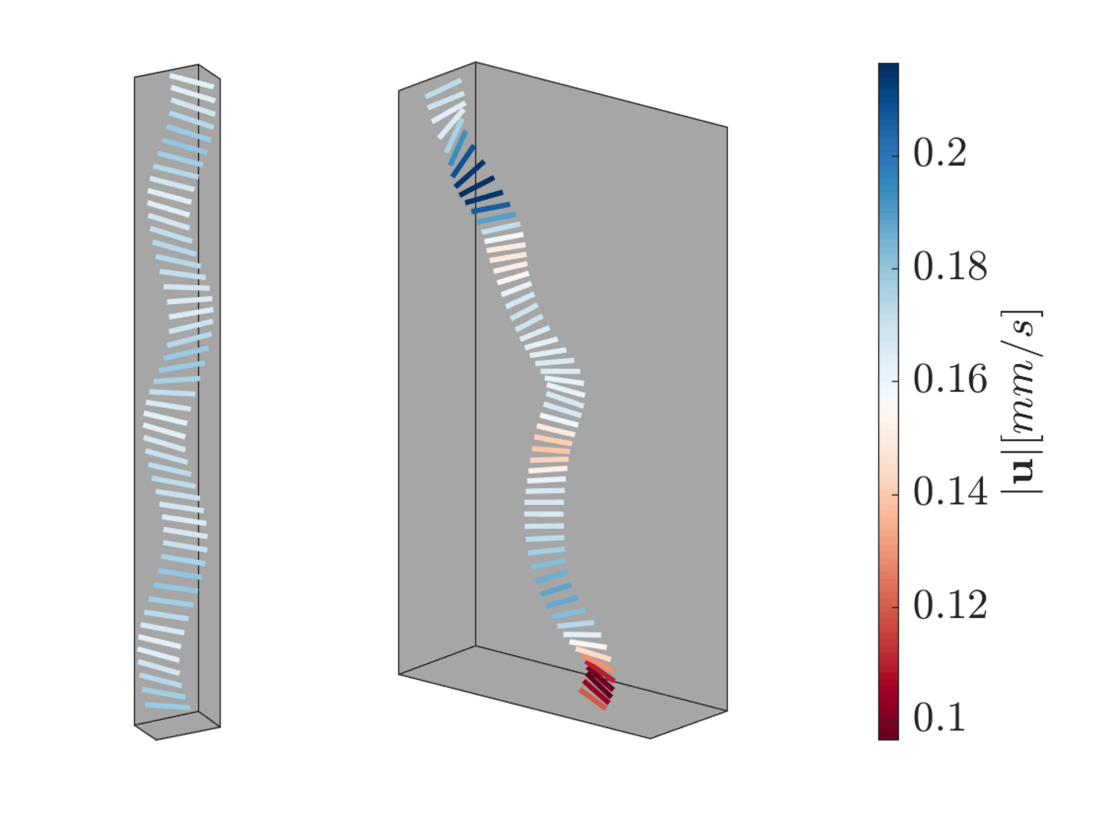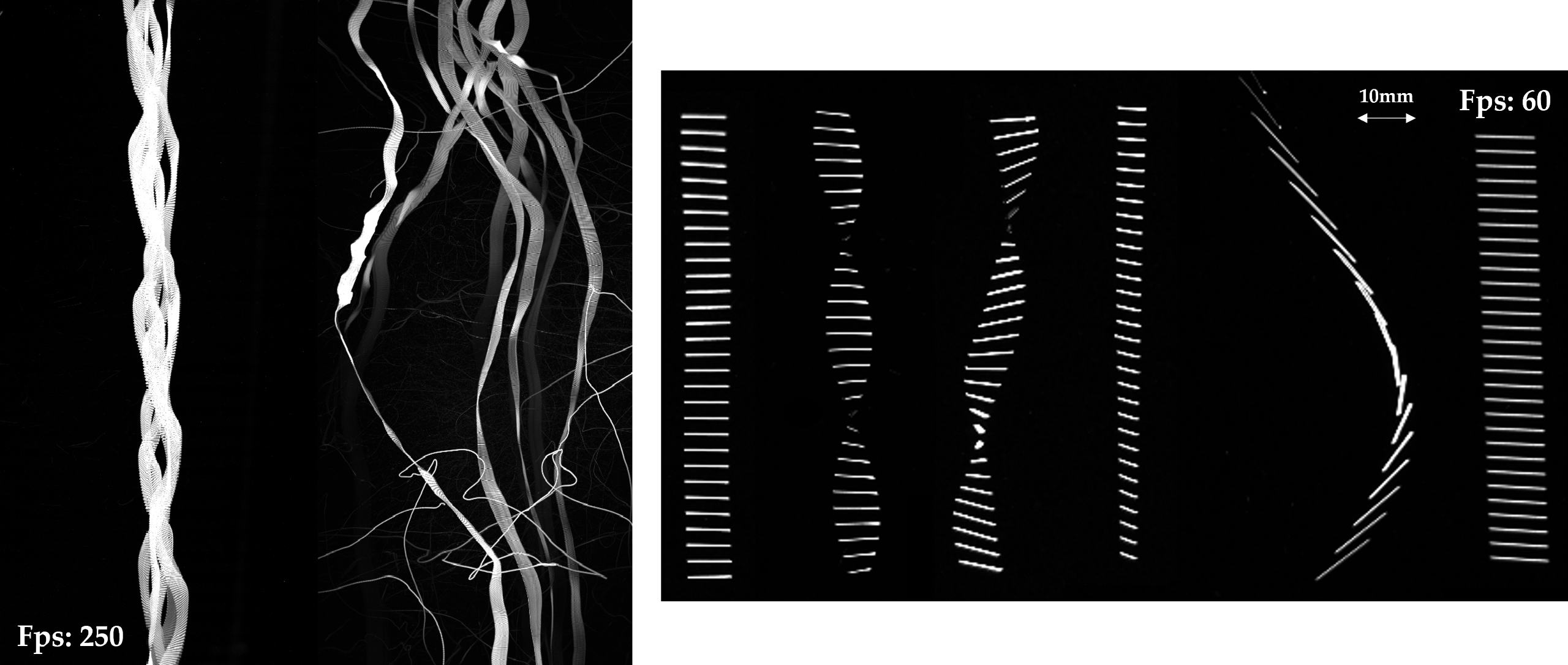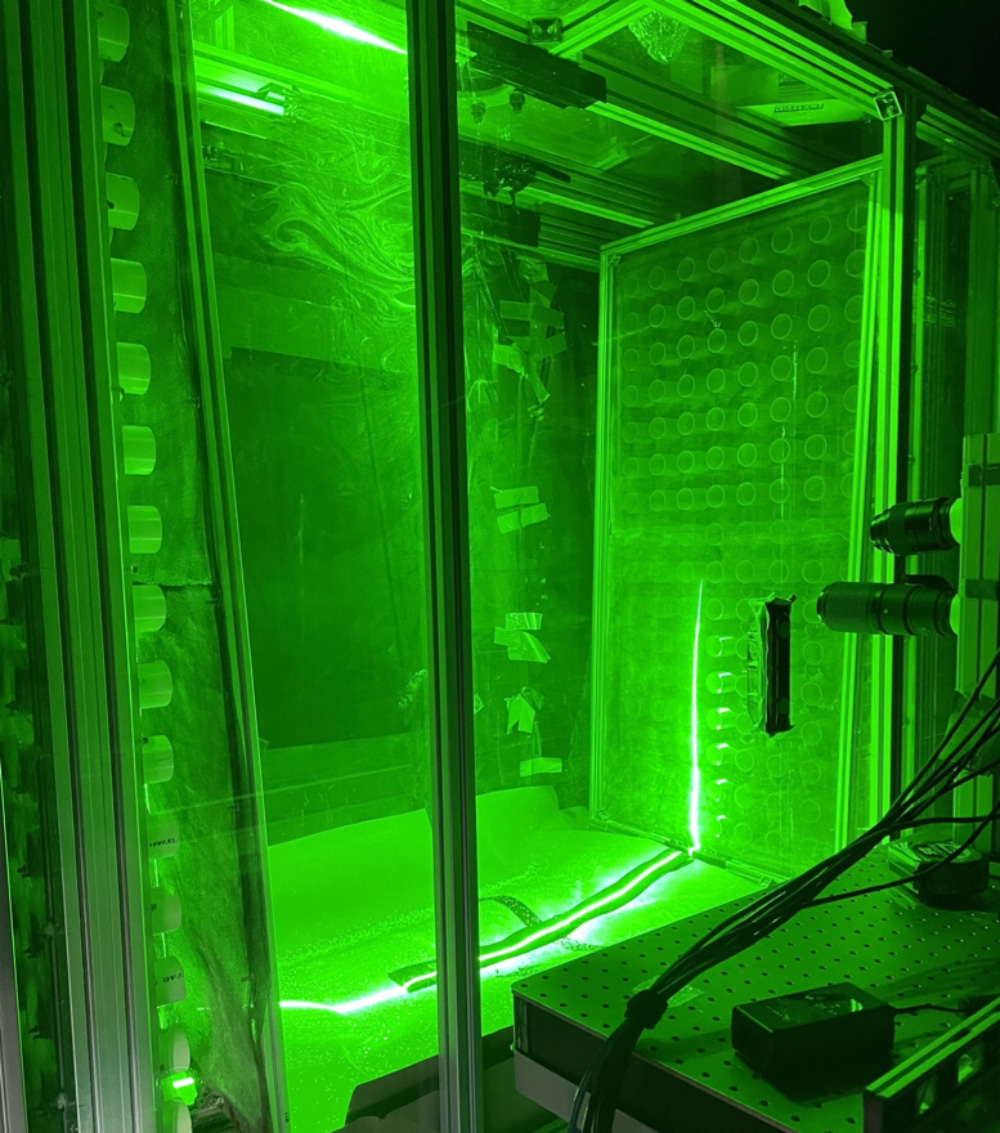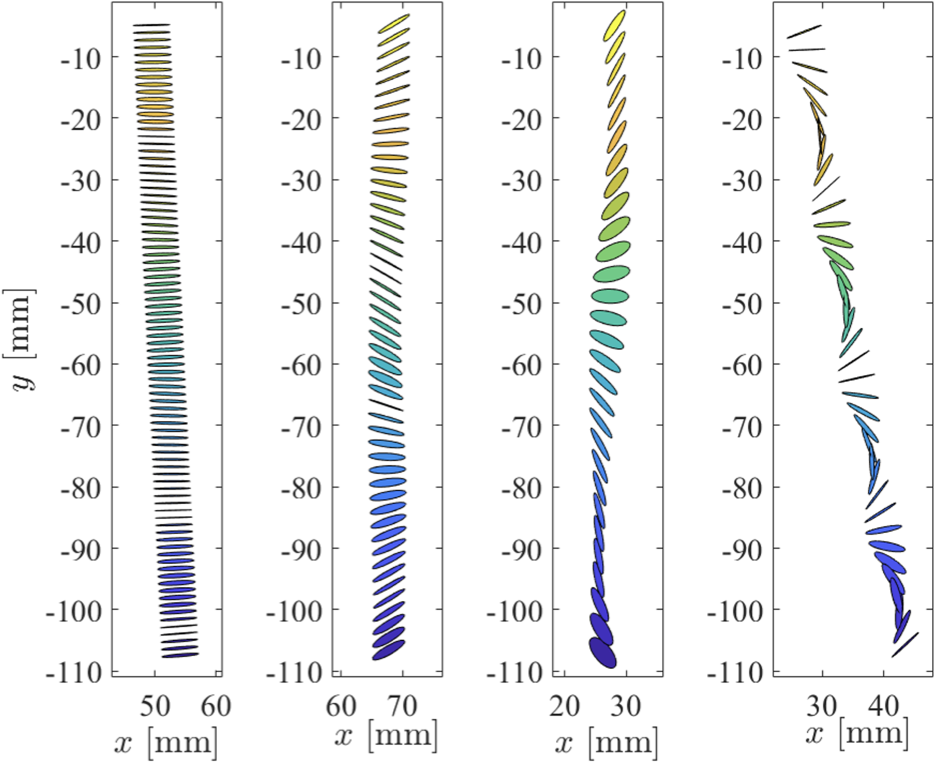Particles in turbulence
Measuring various particle types in turbulent flow using optical imaging.
Settling particles in turbulence

In atmospheric, natural, and industrial applications often large particles reside in turbulent environments, think of rain on a windy day or plastic particles in waterways. Using our 0-mean flow turbulence tank, we are investigating how such large particles react to turbulence and vice versa. Different materials and sizes, as well as Reynolds number lead to a vast parameter space to explore.
Research questions include: How does turbulence influence the settling velocity of inertial, dense particles? Is there a preferential concentration of particles within/outside of eddies? What is the effect of particle volume density on the turbulent flow itself? Therefore, common methods such as Particle Image Velocimetry (PIV) or Particle Tracking Velocimetry (PTV) are employed to capture both the fluid phase velocity as well as the particle movement.

Selected publication
Settling of disks
The settling of finite sized, non-spherical particles in quiescent and turbulent air is investigated. Disks are released at the top of a 3-m long chute entering a large air turbulence chamber. High-speed planar imaging allows to analyze the translational and rotational dynamics of the disks to better understand how their velocities and falling styles are influenced by turbulence. This work is relevant to frozen precipitation settling in the atmosphere, as uncertainties in their velocities propagates into uncertainties in weather forecasts, snow accumulation predictions, and climate models.

